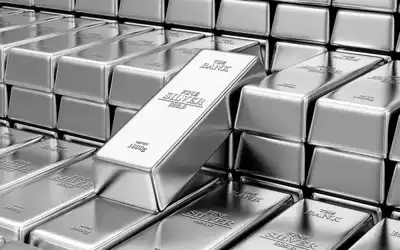Precious metals, particularly silver, are well-suited for investment through funds due to several factors.
Firstly, funds offer an easy and efficient way to achieve diversification in precious metals investments. Instead of buying and managing individual silver assets, investors can pool their money with others in a fund that holds a diversified portfolio of silver assets. This diversification helps spread the risk and reduces the impact of price fluctuations in any one particular silver investment.
Secondly, precious metal funds are professionally managed by experienced portfolio managers who have in-depth knowledge of the silver market. These managers make informed decisions on behalf of investors to optimize returns and manage risks effectively. For individual investors with limited knowledge of the silver market, relying on the expertise of professional fund managers can be beneficial.
Moreover, precious metal funds offer liquidity and convenience. Buying and selling physical silver can involve additional costs and logistical challenges, such as storage and transportation. In contrast, investing in a fund allows investors to enter and exit their positions easily without such concerns.

Furthermore, precious metal funds can provide exposure to a broader range of silver-related assets, including not only physical silver but also silver mining companies, futures contracts, and other derivatives. This diversity enhances the potential for returns and offers exposure to various segments of the silver market.
Strength in Numbers
In larger portfolios, making changes can indeed be more difficult and costly, which can limit the strategies that funds can employ. Actively managing a large portfolio requires careful consideration of market conditions, trading costs, and the potential impact on the overall performance of the fund. This complexity and cost often lead funds to adopt passive management strategies, such as replicating an index, as it can be more cost-effective and easier to manage.
For individual investors with smaller portfolios, actively managing their investments may not be practical or cost-effective. In such cases, investing in funds like mutual funds or exchange-traded funds (ETFs) can offer a more efficient way to achieve diversification and access professional management. Funds allow investors to pool their resources, benefiting from economies of scale and the expertise of professional fund managers.
Passively managed funds, particularly ETFs, have gained popularity due to their lower fees and ability to closely track market indexes. These funds seek to replicate the performance of a specific index, providing investors with exposure to a wide range of assets without the need to individually buy and manage each security.
While there are advantages to investing in funds, it’s essential for investors to carefully consider their individual investment goals, risk tolerance, and time horizon. Different funds have different objectives and risk profiles, so investors should select funds that align with their needs and preferences.
Overall, funds can be a powerful tool for both individual and institutional investors to access the financial markets, achieve diversification, and potentially enhance their investment outcomes through professional management.
The Real Advantages of Silver Based ETFs
ETFs offer a more efficient and cost-effective way to gain exposure to the silver market without the need to buy, store, and sell physical silver.
ETFs, as you mentioned, pool investors’ assets and offer real-time trading on exchanges, providing liquidity and flexibility for investors to enter and exit positions. This liquidity is a significant advantage compared to physical silver, where high trading costs can erode a substantial portion of an investor’s returns.
The expenses associated with buying, storing, and selling physical silver can be quite significant, making it less appealing for investors who wish to maximize their investment returns. Silver ETFs, on the other hand, provide a more cost-effective solution, as the fund itself manages the buying and selling of silver on behalf of investors, benefitting from economies of scale.
Moreover, silver ETFs allow investors to participate in the potential upside of the silver market without the need to worry about the logistics of physical ownership. These funds offer a simple and accessible way for both individual and institutional investors to gain exposure to silver as an asset class.
As with any investment, investors should carefully consider their financial objectives, risk tolerance, and investment time horizon when deciding between physical silver and silver ETFs. Each approach has its merits, but ETFs have become a popular choice due to the convenience, cost-effectiveness, and ability to capture the potential upside of the silver market more efficiently.
Silver ETFs Are Simply Much More Efficient
The efficiency and convenience of electronic trading through ETFs have significantly improved liquidity and reduced trading costs compared to physical silver ownership.
The ability to buy and sell silver ETF shares in real-time on exchanges provides flexibility and agility for investors to implement various trading strategies. Whether one aims for short-term trading or long-term investment, ETFs cater to different time horizons.
Liquidity in the silver market has substantially increased due to the popularity of silver ETFs, benefiting both individual investors and the overall market by enhancing price discovery and reducing trading costs.
Moreover, the flexibility of creating and redeeming ETF shares based on demand ensures that the price of the ETF stays closely tied to the actual price of silver, minimizing discrepancies that arbitrageurs could exploit. This feature helps maintain a fair and efficient market for silver ETFs.
While ETFs present numerous advantages, it’s essential for investors to be aware of counterparty risk and the management practices of the specific ETF they are considering. Proper due diligence is crucial before choosing a silver ETF to ensure its credibility and stability.
Overall, silver ETFs offer a compelling alternative to physical silver ownership, providing a more accessible, cost-effective, and efficient way for investors to gain exposure to the silver market while avoiding the logistical challenges and higher trading costs associated with buying and selling physical silver.




